With a rich Islamic heritage spanning centuries, Iraq has played a vital role in shaping Islamic history and culture. Iraq is a land of immense religious and cultural significance. There are numerous Islamic places to visit in Iraq that are not only significant from a religious point of view but also offer a glimpse into the rich Islamic history of the region.
Whether you are a Muslim or not, visiting these places can be a life-changing experience, as they offer a unique opportunity to witness the beauty of Islamic art, architecture, and spirituality.
What Are the Holiest Sites in Iraq?
In our last post, we talked about Islamic Places to Visit in Iran and today we will focus on its neighboring country, Iraq.
From the Great Mosque of Samarra to the Al-Nuri Mosque in Mosul, these historical and culturally significant sites offer a unique blend of spirituality and architectural beauty.
1 – Imam Hussain’s Shrine
This is a holy site located in the city of Karbala, in central Iraq. It is the final resting place of Imam Hussain ibn Ali, the grandson of the Prophet Muhammad and the third Shia Imam. The shrine is considered one of the most important and sacred places for Shia Muslims around the world.
Every Muslim visiting Iraq has this place on their itinerary because of the love that we all have for Prophet Muhammad, Hazrat Ali and Hazrat Imam Hussain R.A.
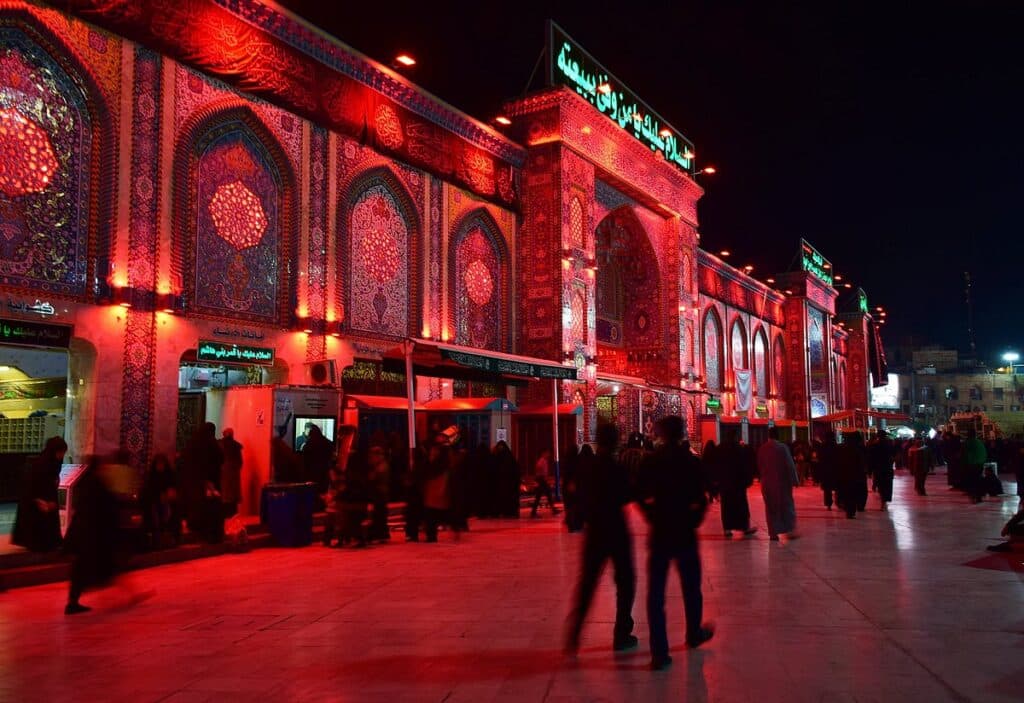
Imam Hussain was martyred in the Battle of Karbala in 680 CE, along with his family and companions, at the hands of the Umayyad Caliphate. His martyrdom is considered a defining event in Islamic history and is commemorated annually by Shia Muslims during the month of Muharram.
The Imam Hussain Shrine complex includes several buildings and structures, including the mausoleum of Imam Hussain, his half-brother Abbas ibn Ali, and other members of his family. The complex also includes mosques, courtyards, and other facilities for visitors.
Millions of Muslims from around the world visit the Imam Hussain Shrine every year, especially during the annual Arbaeen pilgrimage, which marks the end of the 40-day mourning period following the anniversary of Imam Hussain’s martyrdom. The shrine is also an important symbol of Shia identity and resistance against oppression and injustice.
I recommend visiting the site during both daytime and night so you can experience its beauty and peace.
2 – Al Jawadain
Al-Jawadain Holy Shrine is a revered Shia Muslim religious site located in the city of Al-Kadhimiya, in Iraq. It is the final resting place of the ninth and tenth Shia Imams, Imam Muhammad al-Jawad and Imam Ali al-Hadi.
The shrine complex consists of two separate structures, the Shrine of Imam Muhammad al-Jawad and the Shrine of Imam Ali al-Hadi. The two shrines are located adjacent to each other and are connected by a bridge.
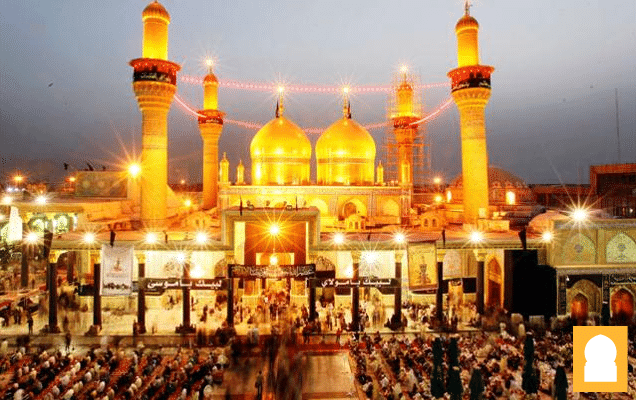
Imam Muhammad al-Jawad was the ninth Shia Imam, and he is known for his exceptional knowledge, piety, and wisdom. He died at a young age and is believed to have been poisoned by his political enemies. Imam Ali al-Hadi, the tenth Shia Imam, was a scholar and a spiritual leader who also faced persecution and was eventually imprisoned and died in custody.
The Al-Jawadain Holy Shrine is a significant site for Shia Muslims around the world, who visit the shrine to pay their respects and seek blessings from the Imams. The shrine complex is also an important cultural and historical site, featuring intricate architectural details and decorations, as well as a library and a museum.
3 – The Great Mosque of Samarra
The Great Mosque of Samarra, built in the 9th century, is one of the largest and most beautiful mosques in the world and features a unique spiral minaret, also known as the Malwiya Tower, that is over 50 meters tall.
The Great Mosque of Samarra has been renovated and restored several times throughout history. However, it suffered significant damage during the 2006 bombing of the Samarra mosque, which destroyed the shrine of the 10th and 11th Shia Imams, as well as parts of the mosque.
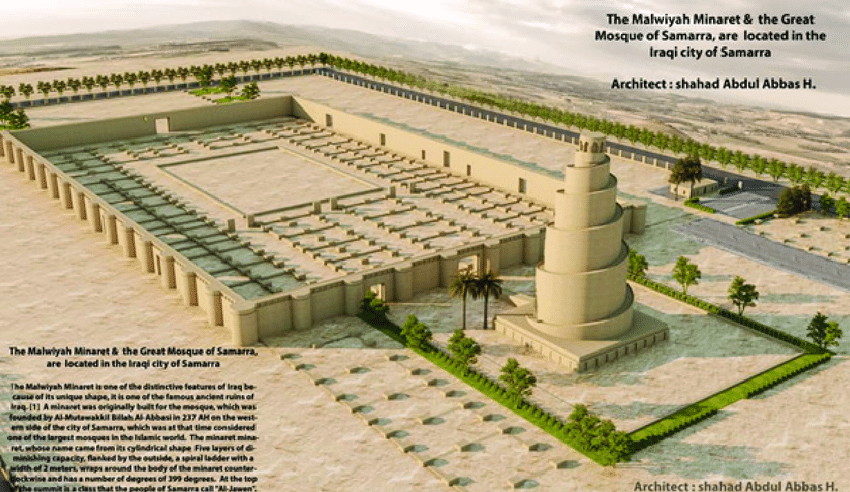
Despite the damage, it remains an important historical and cultural site, attracting visitors from around the world who come to appreciate its unique architectural design and historical significance. The mosque is also an important symbol of Iraq’s cultural heritage, and its restoration is seen as a significant step toward preserving and promoting Iraq’s rich history and cultural identity.
4 – Imam Ali Shrine in Najaf
Imam Ali Shrine in Najaf is the final resting place of Ali ibn Abi Talib, the cousin, and son-in-law of Prophet Muhammad (PBUH).
The shrine complex is one of the largest in the world and includes several buildings and structures, including the Imam Ali Mosque, the Shrine of Hazrat Abbas, and a library. The mosque is the centerpiece of the complex and features an ornate gold-plated dome and intricate decorations and calligraphy.
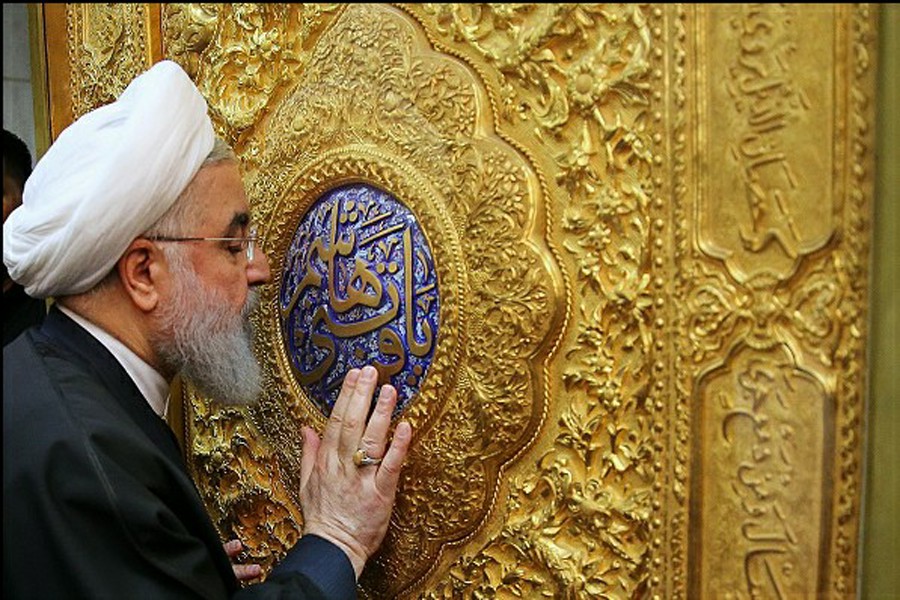
5 – Al-Kadhimiya Mosque in Baghdad
Al-Kadhimiya Mosque in Baghdad is home to the mausoleums of the seventh and ninth Shia Imams, Musa al-Kadhim and Muhammad al-Jawad, and is a popular destination for Shia pilgrims.
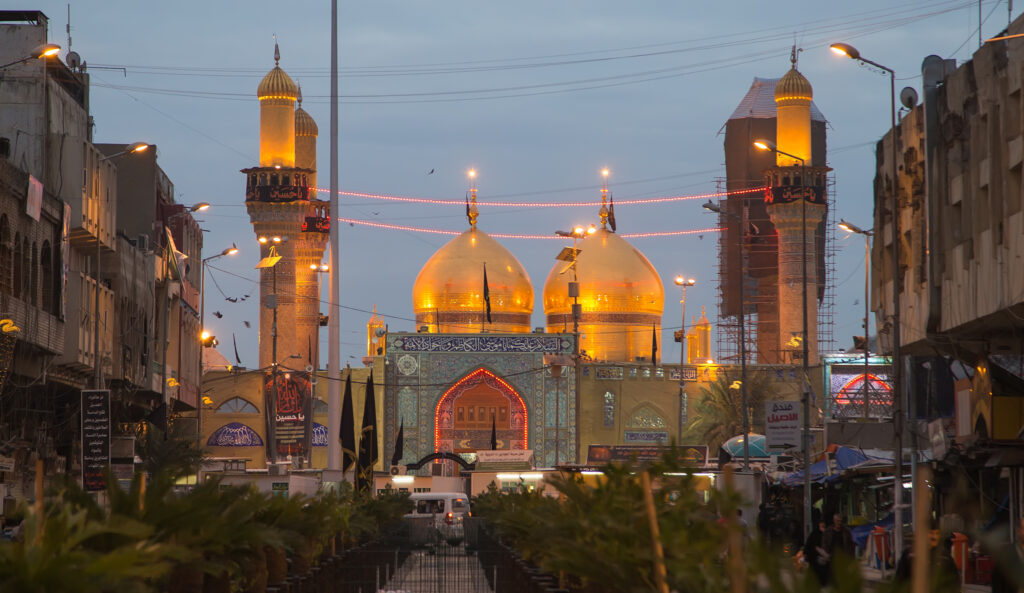
6 – Al-Askari Shrine in Samarra
Al-Askari Shrine in Samarra is the final resting place of the tenth and eleventh Shia Imams, Ali al-Hadi and Hasan al-Askari. The shrine’s dome is covered in over 7 million pieces of gold leaf, making it a stunning example of Islamic architecture.
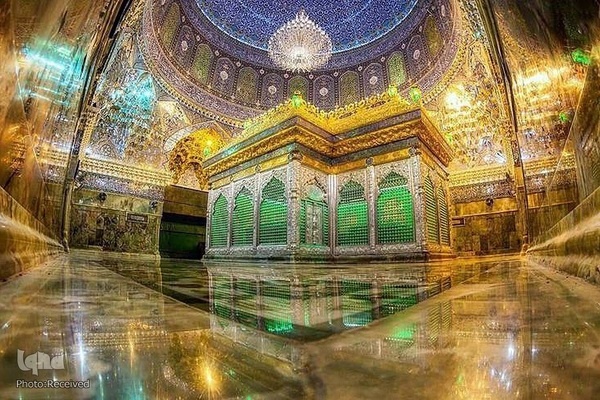
7 – Al-Nuri Mosque in Mosul
Al Nuri Mosque, also known as the Great Mosque of Mosul, is an important historical and religious site in Iraq, dating back to the 12th century. The mosque’s intricate architectural design features ornate carvings, stucco, and tilework, showcasing the region’s Islamic art and architecture. Some interesting facts about the Mosque include:
- Religious significance: Al Nuri Mosque is a significant site for Sunni Muslims, as it was named after Nur al-Din Mahmoud Zangi, a famous Muslim leader who fought against the Crusaders.
- Cultural experience: Visiting the mosque provides an opportunity to immerse oneself in the local culture and history of Mosul, and to witness firsthand the resilience of the Iraqi people in the face of adversity.
- Peaceful message: The restoration of the Al Nuri Mosque is a symbol of hope and peace for the people of Mosul and Iraq, and visiting the mosque is a way to support these efforts and send a message of solidarity.
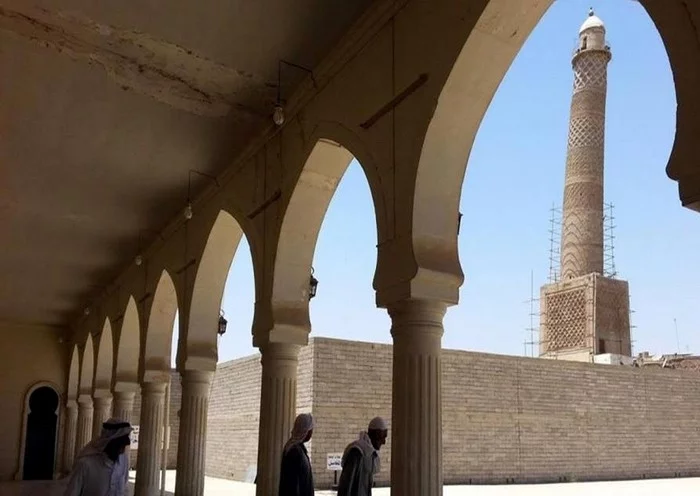
8 – Al-Tusi Mosque in Najaf
Al-Tusi Mosque in Najaf is named after the famous Islamic scholar Nasir al-Din al-Tusi, who was born in Najaf and is credited with many contributions to the fields of mathematics, astronomy, and philosophy.
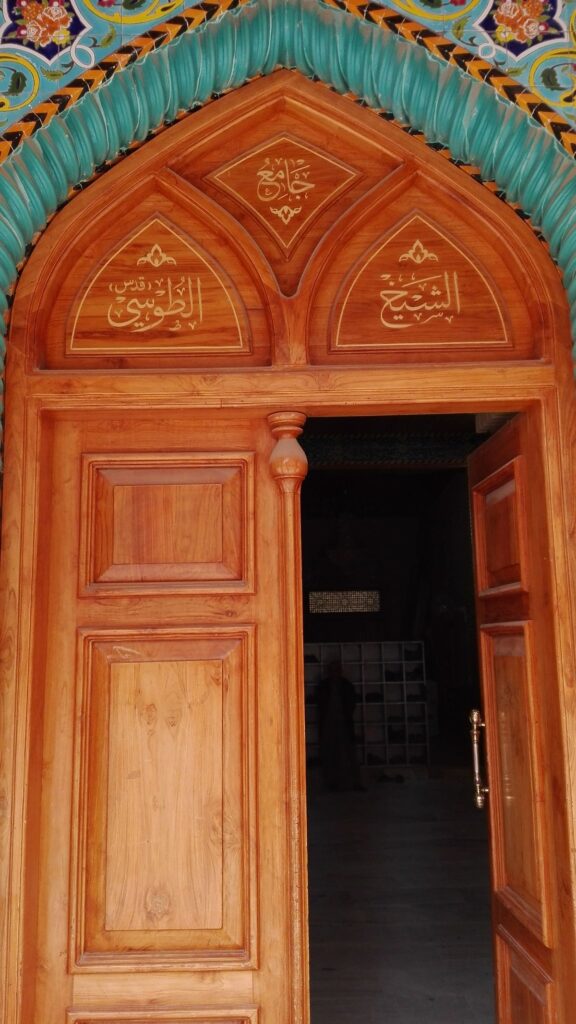
9 – Ali Air Base Mosque in Nasiriyah
Ali Air Base Mosque in Nasiriyah is a modern mosque built on the site of an airbase used by US forces during the Iraq War. Some of the interesting facts about the Mosque include;
- Unique architecture: The mosque’s architecture is distinctive, with a large, circular prayer hall and a minaret that resembles a control tower, reflecting its location on the air base.
- Cultural exchange: The mosque provides an opportunity for military personnel from different cultures and religions to learn about and experience Islamic worship and traditions.
- Peaceful respite: For military personnel stationed on the base, the mosque can provide a peaceful respite from the stress of military life, offering a space for prayer, reflection, and relaxation.
- Symbol of cooperation: The existence of the mosque on the air base is a symbol of the cooperation between Iraqi and coalition forces in the fight against terrorism and in the efforts to promote peace and stability in the region.
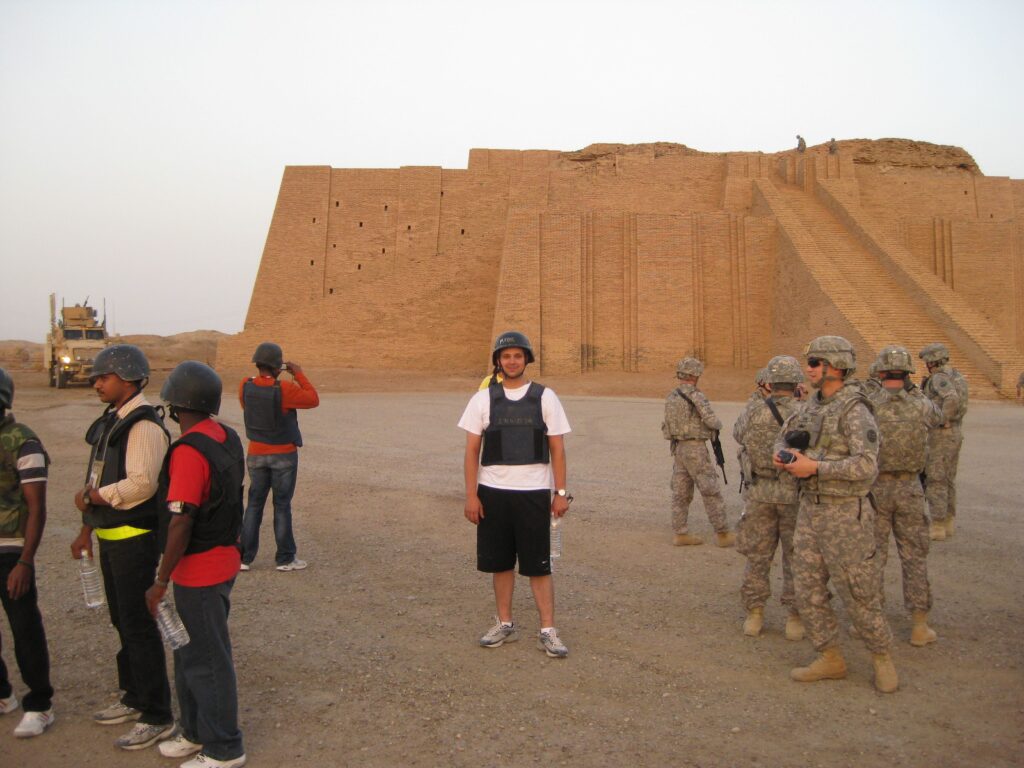
10 – Wadi-us-Salaam Cemetery
Wadi-us-Salaam Cemetery in Najaf is one of the largest cemeteries in the world and is the final resting place of many notable figures in Islamic history, including the Prophet Adam (A.S.) and the Prophet Noah (A.S.).
Wadi us Salam Cemetery in Najaf, Iraq, is one of the largest cemeteries in the world, covering an area of over 1,500 acres and containing an estimated five million graves.
Here is why you should visit it on your trip to Iraq.
- Cultural experience: Visiting the cemetery provides an opportunity to learn about and experience the rich cultural and religious traditions of Shia Islam, and to witness firsthand the importance of this site to the local community.
- Architectural beauty: The cemetery contains several mausoleums and shrines that are known for their intricate Islamic architecture, including the Imam Ali Shrine, which features a large golden dome.
- Reflection and contemplation: For visitors, the cemetery can provide a space for reflection, contemplation, and connection with the spiritual world, regardless of their religious beliefs.
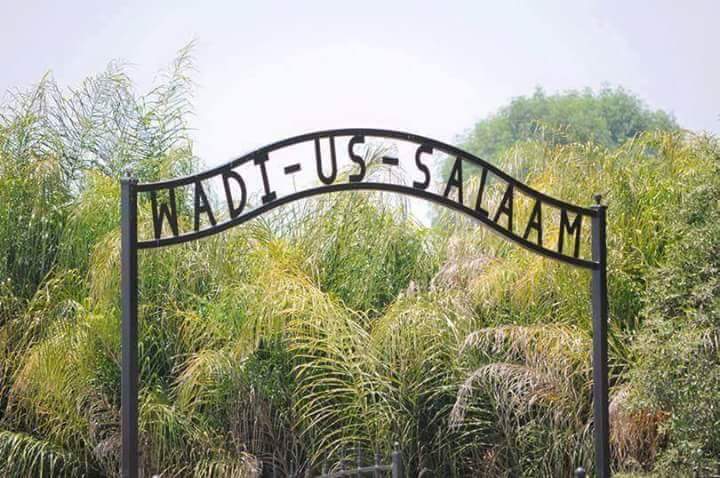
11 – The Mosul Cultural Museum
Although not strictly an Islamic site, the Mosul Museum is an important cultural and historical site in Iraq. The museum houses a collection of ancient artifacts and artworks from the Mesopotamian region, including Islamic art and manuscripts.
Despite being damaged during the ISIS occupation of Mosul, efforts are underway to restore and reopen the museum to the public.
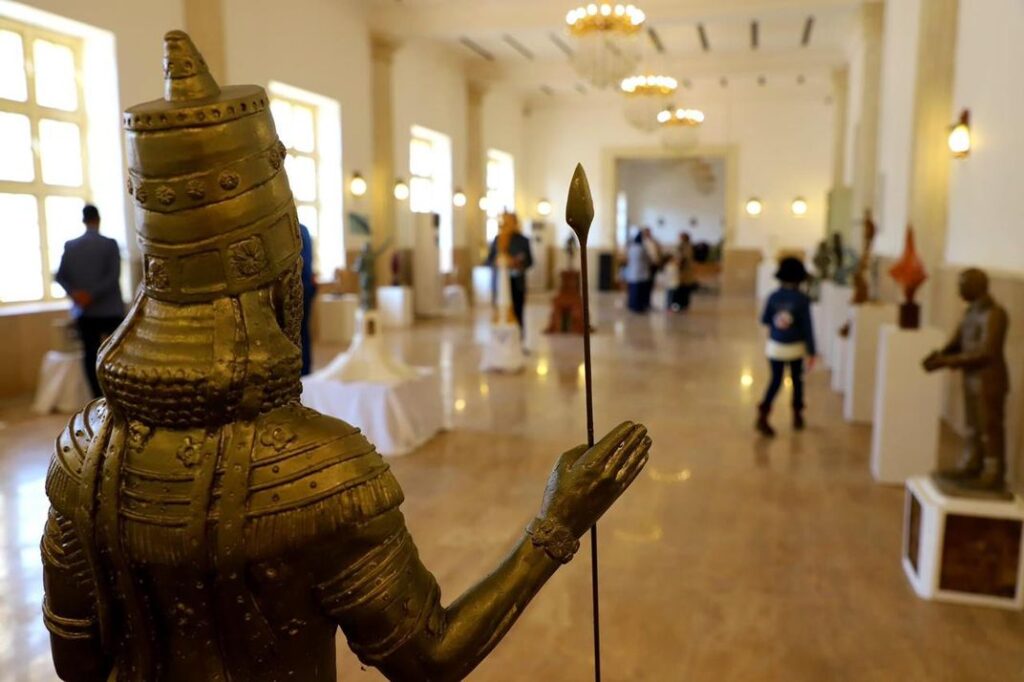
12 – Al-Ukhaidir Fortress
This 8th-century fortress is located in the desert outside of Najaf and is considered one of the most impressive examples of early Islamic military architecture. The fortress features towering walls, massive gates, and a network of underground tunnels.
Built during the reign of the Abbasid Caliphate, the fortress features towering walls, massive gates, and a network of underground tunnels. The central palace complex, which was once decorated with intricate plaster carvings and mosaics, included living quarters, reception rooms, and a large bathhouse. The fortress also housed stables, barracks, and other facilities for soldiers and their horses.
Ukhaidir Fortress served as a regional administrative center and a symbol of Abbasid power in the region for several centuries before it was abandoned and fell into disrepair.
In the centuries since, the fortress has been the subject of extensive restoration efforts and is now a popular tourist destination for Muslims and an important cultural landmark in Iraq.
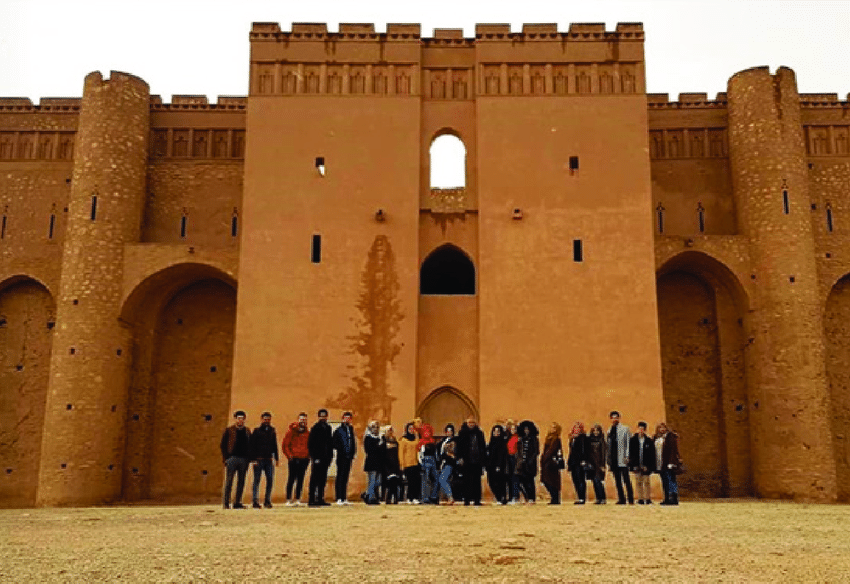
FAQs
Q. Why do Muslims visit Iraq?
The religious ceremony honors the Prophet Mohammed’s grandson, who was killed in the Karbala battle in the seventh century. A significant religious event will culminate in Iraq hosting millions of Shia pilgrims in the city of Karbala.
Q. Should you wear a hijab in Iraq?
The headscarf, or hijab, is not required in Iraq, as it is in Iran. But when visiting any holy site or mosque, you should cover your head as a sign of respect. Many mosques provide these coverings to tourists.
Q. What is Iraq famous for?
Iraq is famous for its rich history, culture, and natural resources. Some of the notable things that Iraq is known for include:
- Mesopotamia: Iraq is home to the Mesopotamian civilization, one of the earliest and most influential civilizations in human history. It is often called the cradle of civilization, and it was home to the Sumerian, Babylonian, and Assyrian empires.
- Religious and cultural sites: Iraq is home to several significant religious and cultural sites, including the holy cities of Najaf and Karbala, which are important pilgrimage destinations for Shia Muslims. The ancient city of Babylon, the ruins of Nineveh, and the Citadel of Erbil are also important historical and cultural sites.
- Oil: Iraq has one of the largest oil reserves in the world and is a significant exporter of crude oil.
- Dates: Iraq is one of the largest producers of dates in the world, and its dates are considered some of the best in the world.
- Cuisine: Iraqi cuisine is known for its rich flavors and spices, and its dishes often include rice, meat, and vegetables.
- Poetry and literature: Iraq has a rich tradition of poetry and literature, with notable writers such as Al-Mutanabbi, the famous Arabic poet, and the 13th-century scholar and philosopher, Ibn Taymiyyah.
Overall, Iraq has a rich history, culture, and resources that have contributed significantly to its global reputation.






